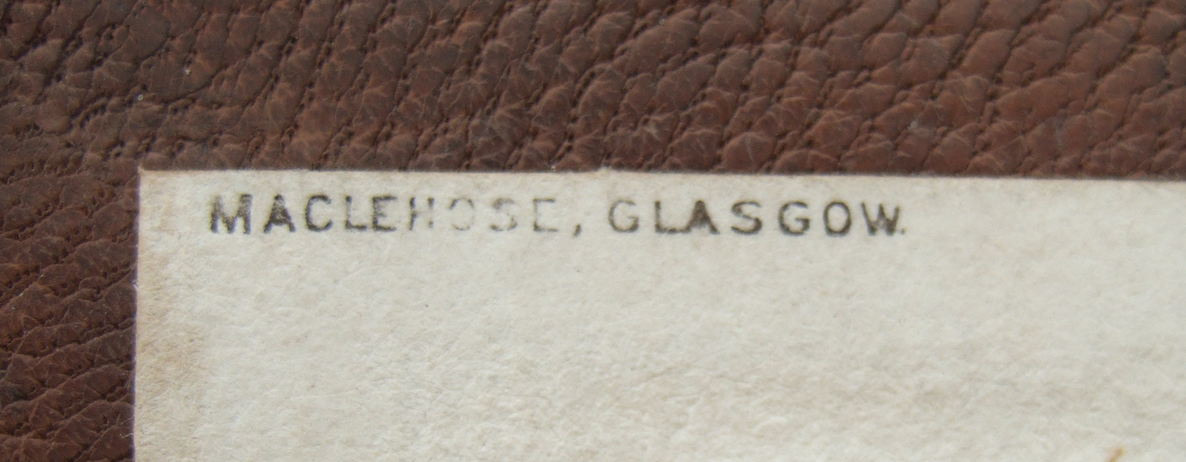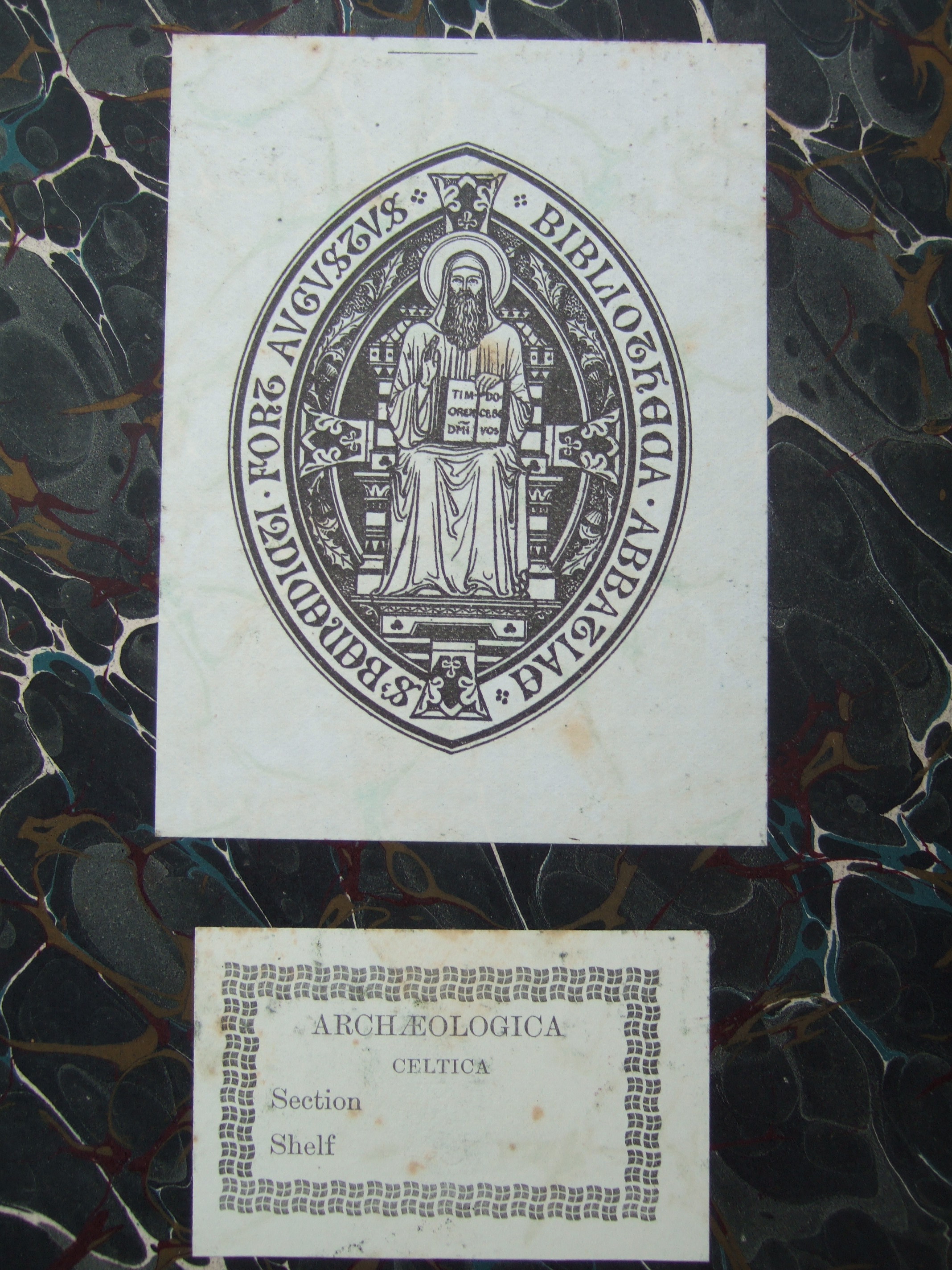A couple of days ago, I had bindings on my mind. I’d been discussing Scottish bindings with a friend and that evening found myself looking at my own library for any which stood out from the ordinary run. Pulling a couple of volumes off the shelves, the third Miscellany of the Spalding Club (Aberdeen, 1846) and an odd volume of the Bannatyne Club edition of Spalding’s Troubles (Edinburgh, 1829), I was struck to see the same unintrusive binders’ stamp in each: “MACLEHOSE GLASGOW”.

I was intrigued. Both bindings, though comparatively simple, were well-executed and rather beautiful. Who was MacLehose, I wondered, and how did he fit into the longer history of Scottish fine binding?

MacLehose, it proved, was none other than James MacLehose (1811-1885), the well-known Glasgow publisher and bookseller who, according to the ODNB, had opened a fine bindery alongside his other business concerns in 1862. An 1892 article in The British Bookmaker provides some insight into the nature of his workshop:
“[N]o ordinary trade work is done. All the books bound here are either the firm’s own work, or the work of private customers . . . Levant, morocco, and a special calf are the principal styles, hand finished and single lettered, and though many of the books are elaborately bound with special designs, a large share are in the severely plain style which finds favour particularly in Scotland”.
Examples of MacLehose’s more elaborate bindings can be seen in Glasgow and London but I suspect that my volumes are more representative of the “severely plain style” mentioned. The beauty of the bindings comes from carefully executed gold rules and heavily textured calf or goat rather than from a profusion of tooling. In the case of Spalding’s Troubles the binder has even incorporated the original brown paper binding common to Bannatyne Club volumes into their own work.


In both cases, these club publications have been rebound; each would have come into the world in a rather more modest trade binding. The surviving provenance makes it possible to at least hazard a guess as to who may have sent them off to Glasgow for improvement. In the case of the Miscellany, this is one of a number of volumes I’ve come across from the lately dispersed library of the Benedictine Abbey at Fort Augustus near Inverness. Although not all items from the abbey library appear to have been rebound, I wonder if this might have been a case of the monks splashing out?

Spalding’s Troubles also boasts a bookplate: a fine heraldic woodcut proclaiming its owner to be one David Murray. Murray (1842-1928) was a Glaswegian lawyer, antiquary, bibliophile, and namesake of the University of Glasgow’s book-collecting prize. He donated most of his library to the university shortly before his death but this volume seems to have escaped. Given its provenance, it was presumably Murray who had it rebound.

So, what can we learn from this? This sort of investigation opens up intriguing windows onto how books were valued and presented in nineteenth-century Scotland, as well as providing some examples of the book binder’s art from a period which is less heavily studied than earlier centuries. But I think it also provides a lesson in informed book collecting. I bought both of these volumes for a few pounds each, purely for their contents and their value as part of a scholarly reference library, and I very much doubt that their sellers were any more aware than I of what made them interesting as physical artefacts. Now, though, I’ll be keeping my eyes open for more examples of MacLehose’s art. It may be “severely plain” for the most part, but it has the beauty of fine craftsmanship and is a still-to-be-explored chapter in the nineteenth-century Scottish book trade.
Copyright © 2017 Kelsey Jackson Williams
Leave a comment